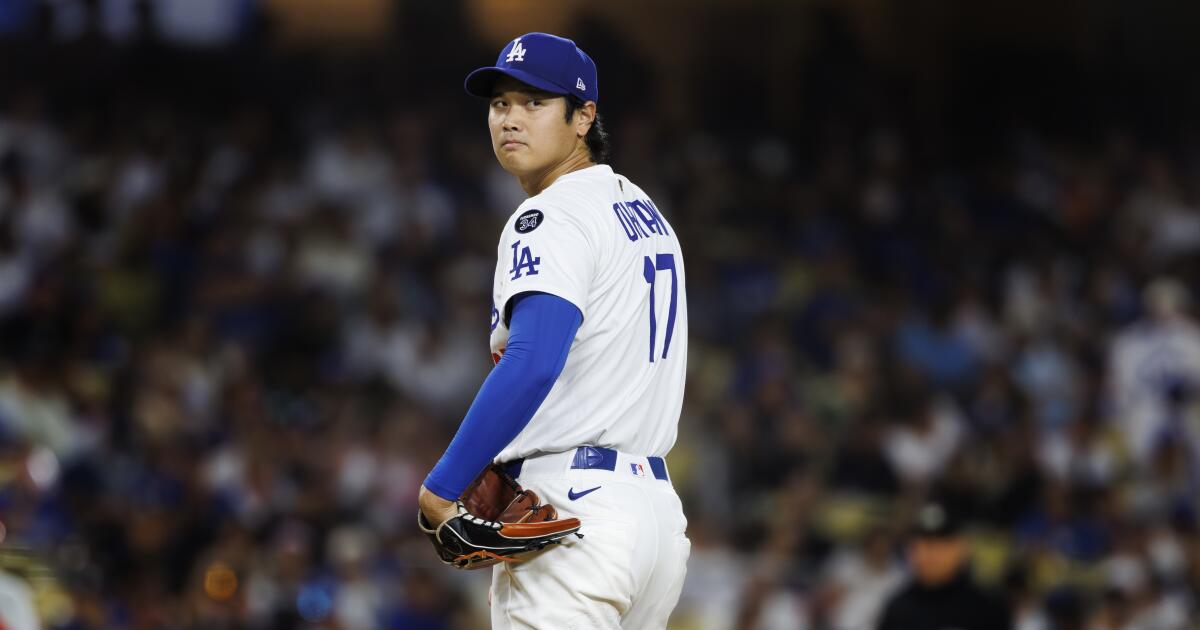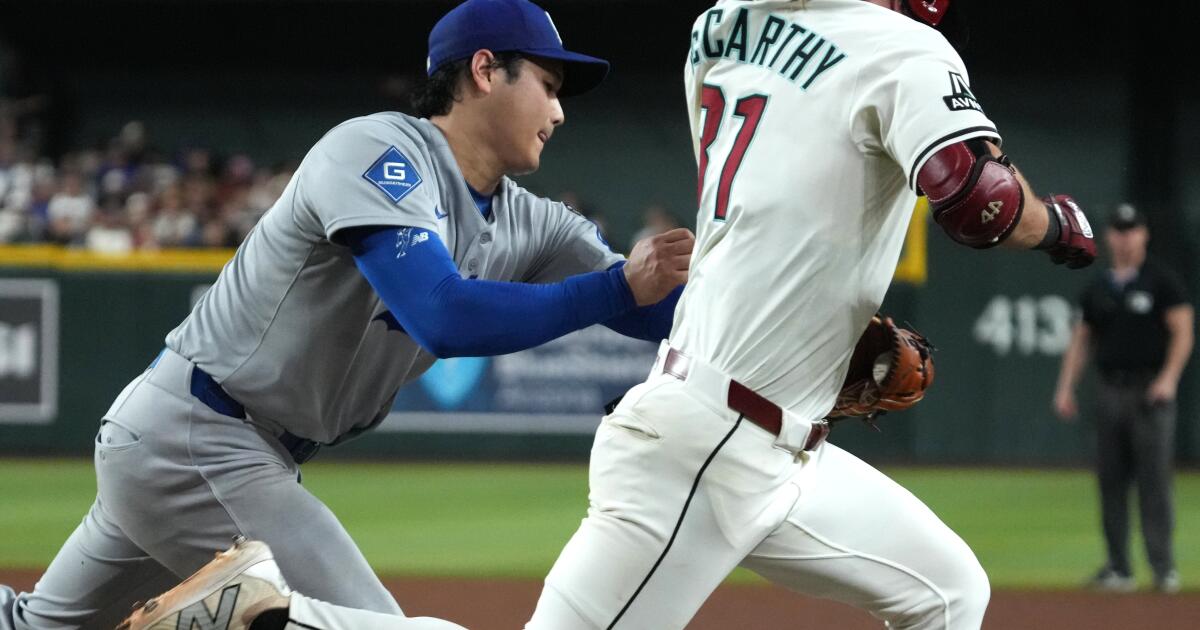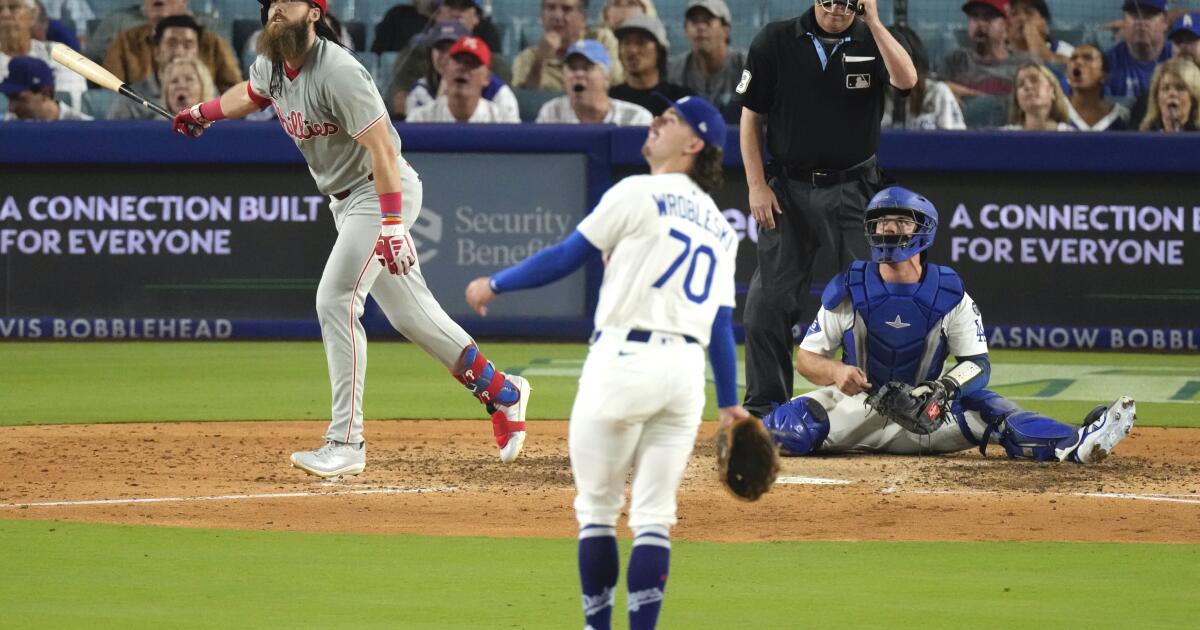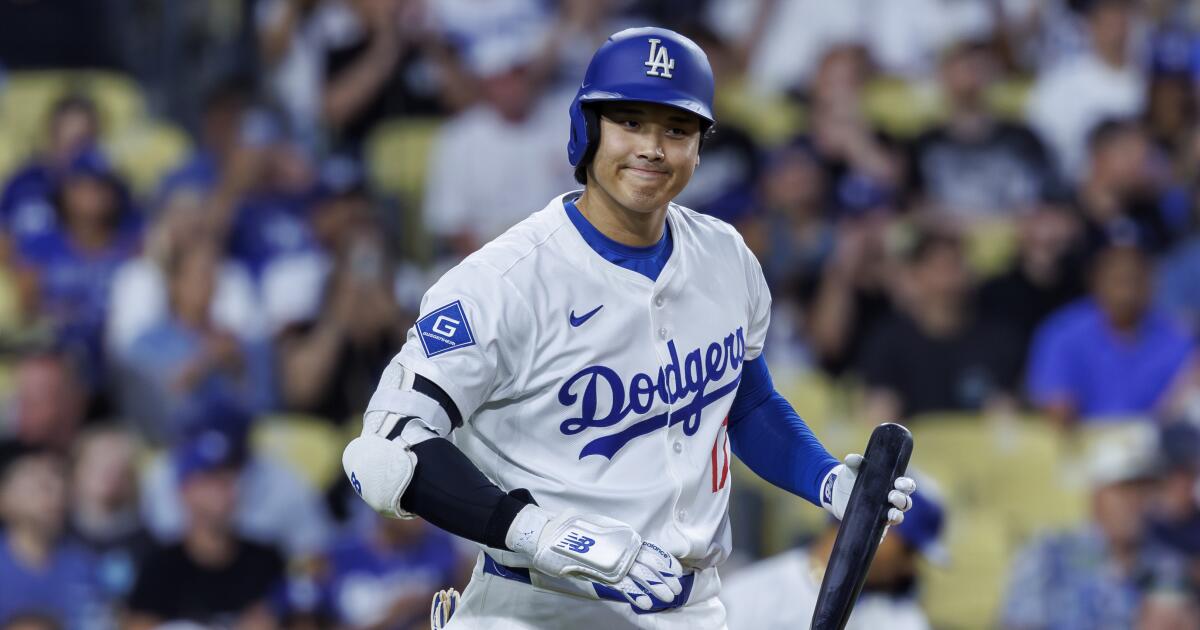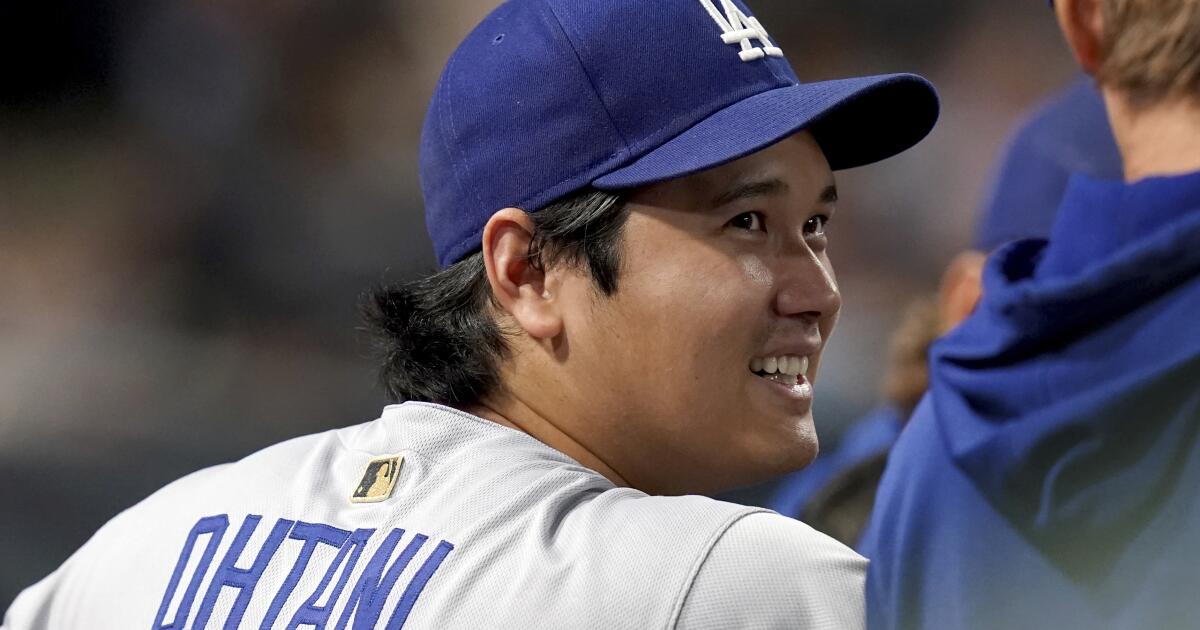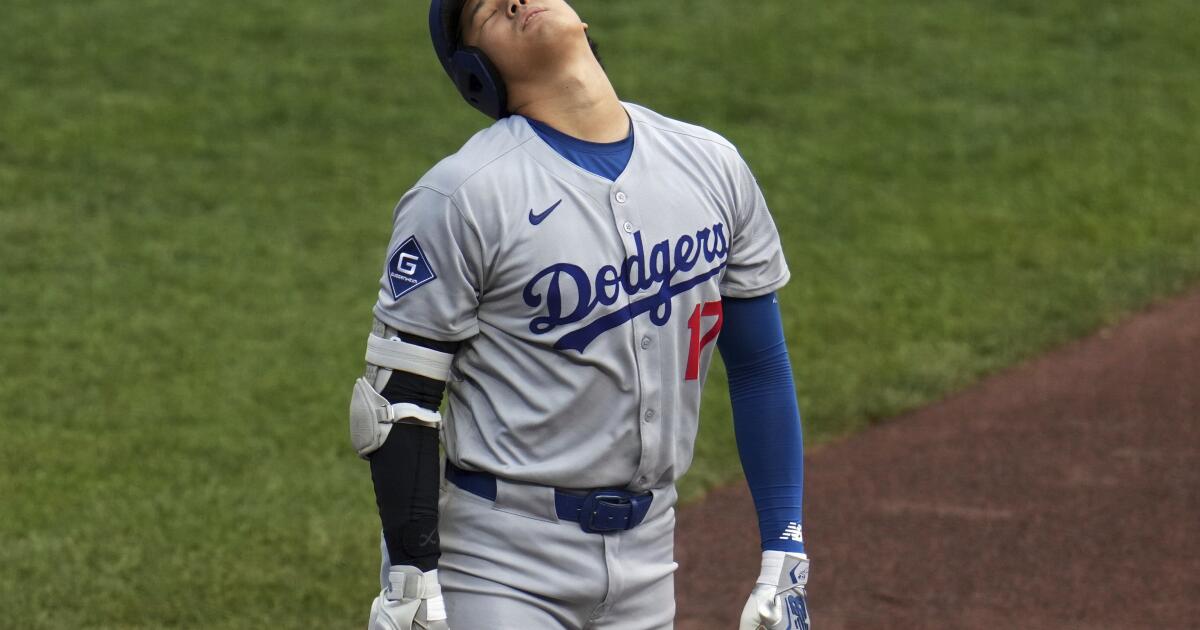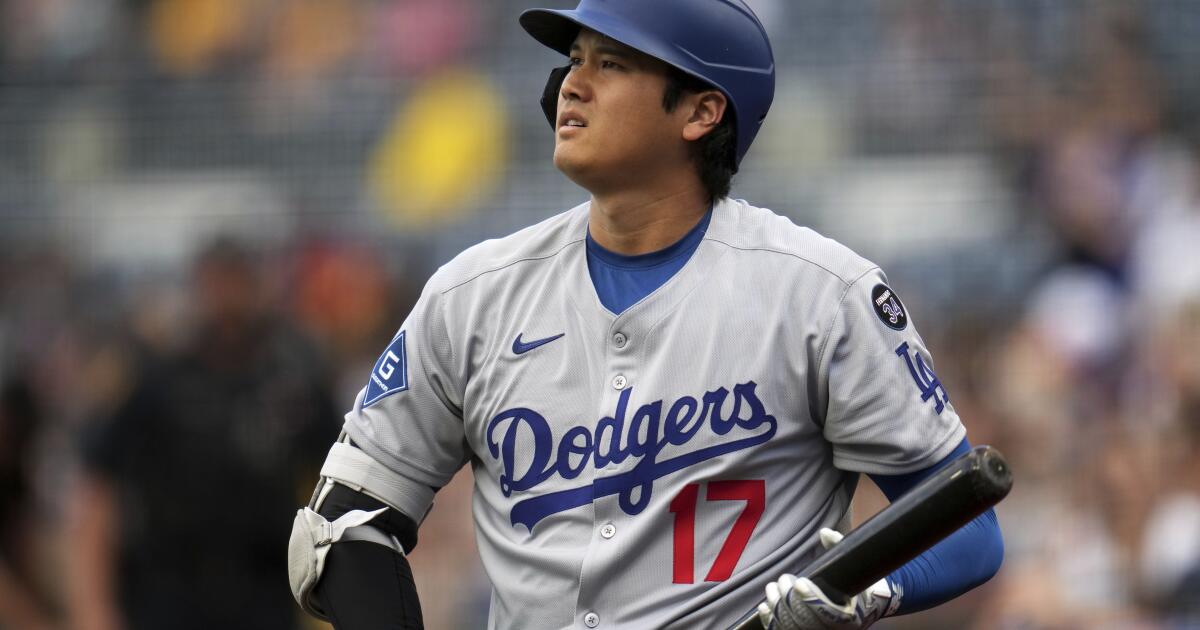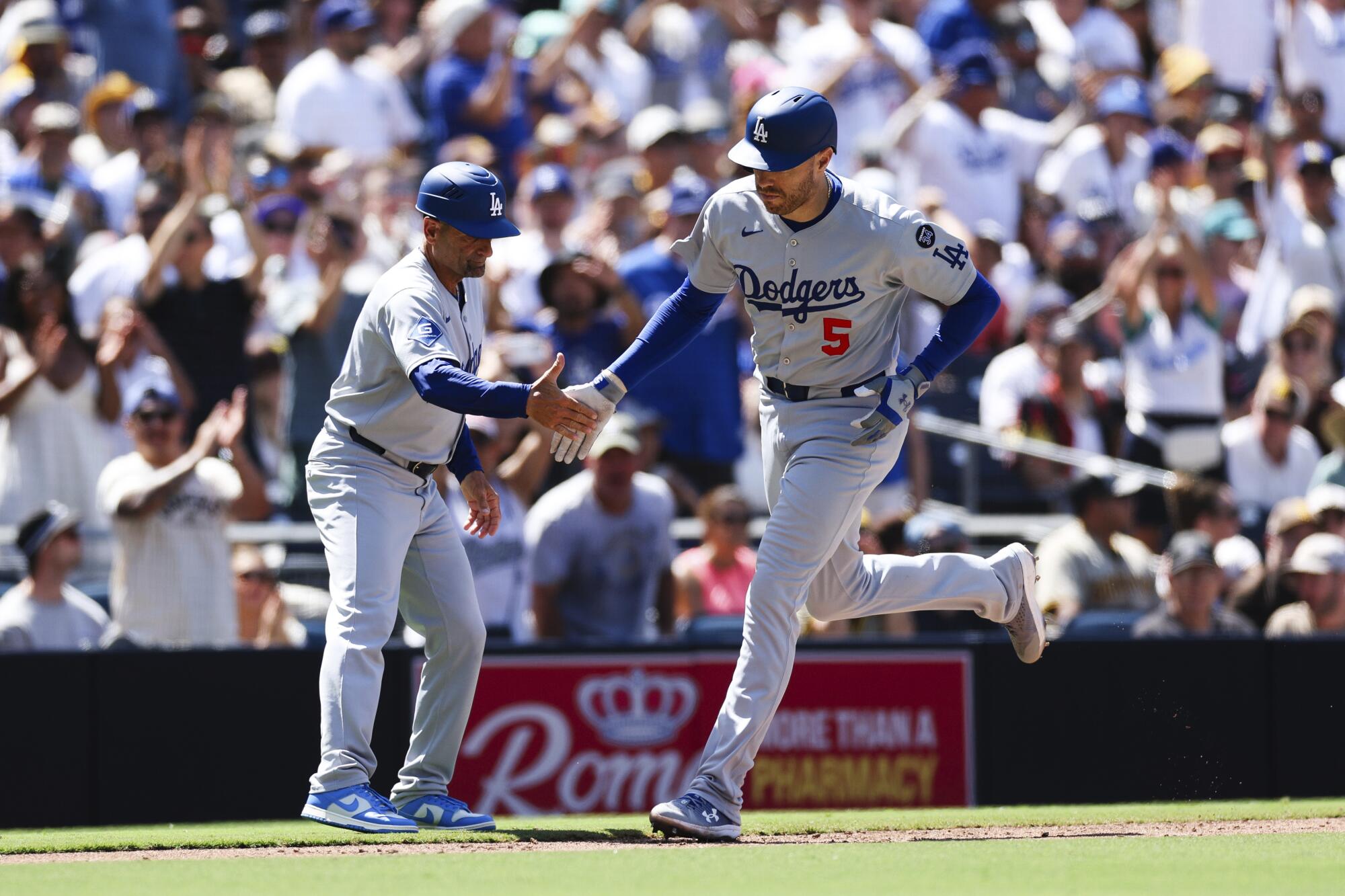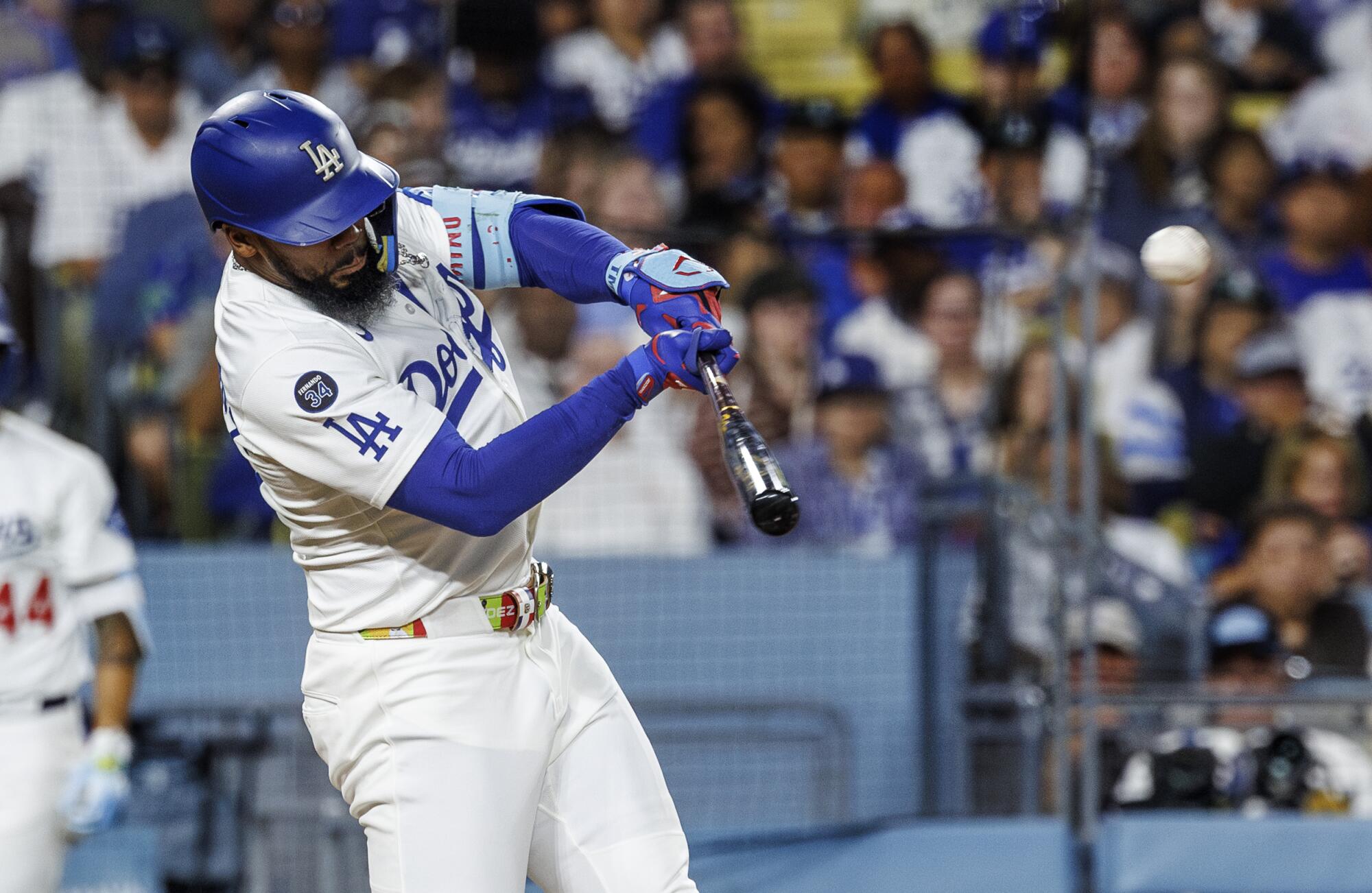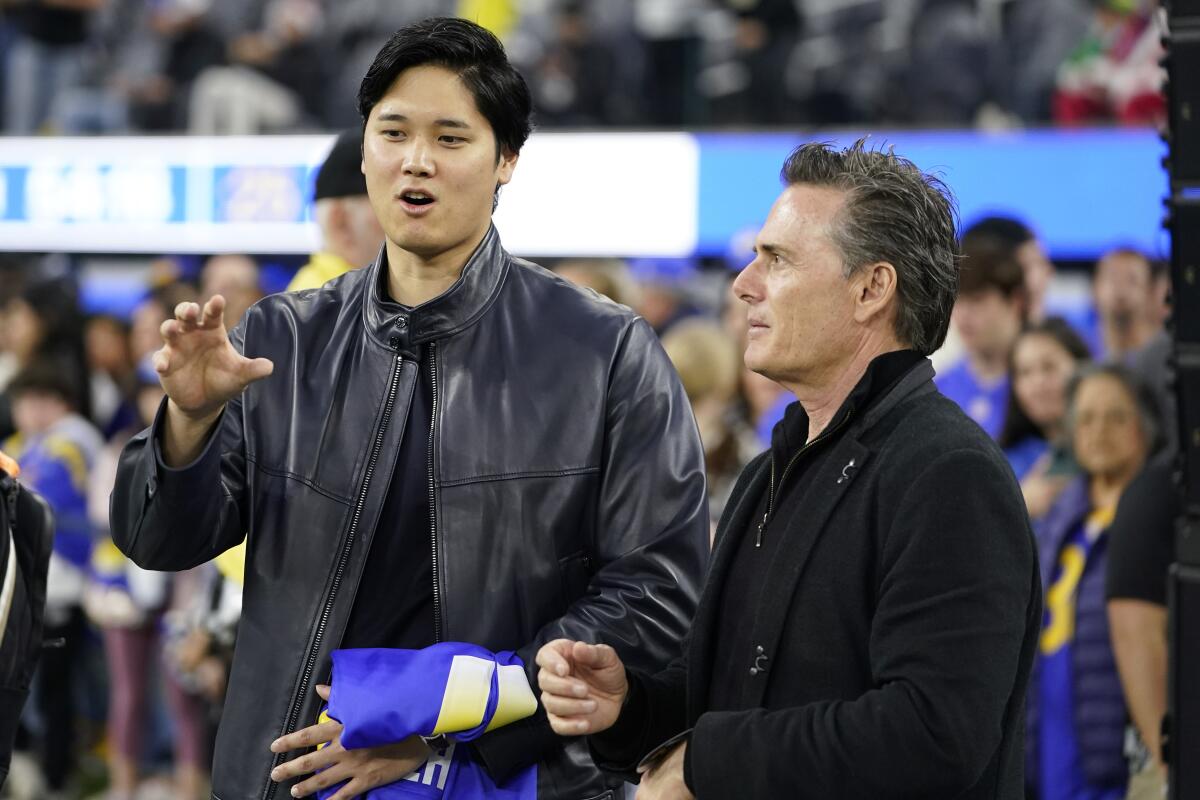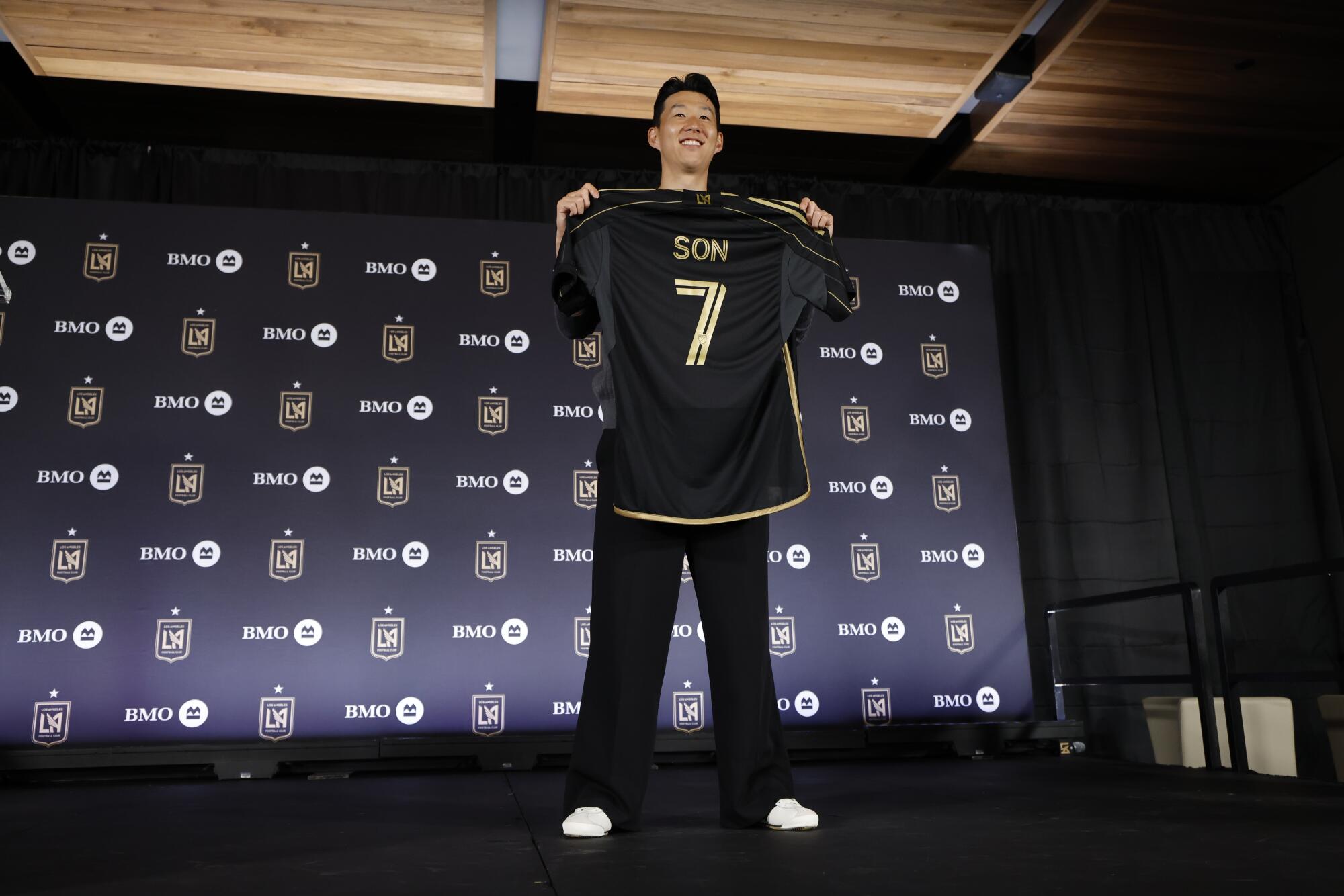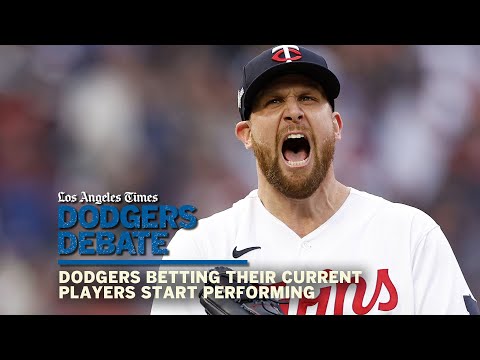The Dodgers are leading the majors in on-base-plus-slugging percentage as an offense this year. They are second in the National League in scoring, and third in team batting average.
They have the league’s top players in hitting (Will Smith batting .324 and Freddie Freeman batting .306) and OPS (Shohei Ohtani at .982 and Smith at .963).
They figure to have several players who will get MVP votes at the end of the season, including the odds-on favorite for the award in Ohtani.
And yet, as the club enters the stretch run of the season, their lineup might be the biggest question mark in their bid to defend last year’s World Series championship. Since the start of July, they have scored the third-fewest runs in the majors, have the second-lowest team batting average and the fourth-lowest OPS.
They stayed relatively quiet at the trade deadline, hopeful a number of struggling superstars would get things going over the campaign’s final two months. But to this point, only Freeman (who endured a two-month slump before heating up again on their recent nine-game trip) has shown tangible signs of a late-season revival.
“If you look at it from the offensive side, as far as our guys, they’ll be the first to tell you they’ve got to perform better and more consistently,” manager Dave Roberts said this past weekend, after utility outfielder Alex Call became the team’s only deadline addition to the lineup. “That’s something that we’re all counting on … Now it’s up to all of us to go out there and do our jobs.”
While that’s true of most hitters in the lineup, all the way down to Andy Pages and (even before his most recent ankle injury flare-up) Tommy Edman, there are three star-level players in particular the Dodgers have been waiting to round back into form.
Here’s a look at the problems plaguing each of them:
Mookie Betts
First 15 games: .304 average, .554 slugging percentage, .954 OPS
Last 87 games: .222 average, .327 slugging percentage, .616 OPS
When asked on Sunday for the umpteenth time this season if he knew what was wrong with Mookie Betts’ swing, Roberts failed to come up with an answer.
“Honestly, no,” Roberts said. “I know that he and the hitting coaches have been working diligently, consistently, intentionally. I think that the first thing, the easiest thing, to say is it’s a mechanical thing. So I guess kind of that’s where he’s at. But also, I do believe that there’s a mental part of it, too, which is sort of beating him down a little bit.”
When Betts was presented with the same question later Sunday afternoon, after running a season-long hitless streak to 17 at-bats and watching his batting average dip to .233, he was left searching for divine intervention.
“I’ve done everything I can possibly do,” he said. “It’s up to God at this point.”
Betts’ struggles are not for a lack of effort. He spends hours in the batting cage before (and sometimes after) almost every game. He has tried mechanical tweaks and mental cues and fundamental drills that in the past would get him back on track.
His approach has largely remained sound, as he ranks in the top 20% of big-leaguers in chase rate, whiff rate and strikeouts percentage, per Baseball Savant’s Statcast data.
And while his bat speed is in the 11th percentile of MLB hitters (and down almost two mph from his 39-homer season in 2023), it’s also about the same as he had last year, when he was still a .289 hitter with 19 home runs (in just 116 games) and a .863 OPS (which only trailed Shohei Ohtani for the best on the team).
“I really don’t know what else to do,” he said. “I don’t have any answers.”
Perhaps the most confounding metric: Betts is in the 99th percentile in “squared-up” rate, a metric that effectively determines when a ball is hit off the sweet spot of the bat.
But, even when Betts does make solid contact, he simply isn’t generating as much power as he usually does — ranking among the bottom third of big-league hitters in average exit velocity and hard-hit percentage; and watching fly balls that used to leave the yard die at the warning track, if they even make it that far.
While he has been a victim of some bad luck (his expected .252 batting average is almost 20 points higher than his actual mark), he has had no choice but to “go back to the drawing board” time and time again this year — gradually grating on his confidence as answers continually fail to appear.
“I don’t know anybody in the world that would have confidence in the stretch that’s going on [for me],” he said. “It sucks when you don’t get stuff done.”
Betts can be a streaky hitter. And the Dodgers’ hope is that, at some point over these final two months, he’ll find something that unlocks more pop in his bat, and go on the kind of heater that can make him an effective producer at the top of the lineup again.
Until that happens, however, questions will persist. About whether his shortstop play is to blame for his offensive decline (a theory multiple rival evaluators have increasingly pointed to of late as a reason for his struggles). About whether age is simply catching up to the soon-to-be 33-year-old veteran. And about whether he will ever be the same hitter he was once, amid a season-long slump almost no one saw coming.
Shohei Ohtani
First 70 games (before resuming pitching): .297 average, 1.034 OPS, 24% strikeout rate
Last 40 games (since resuming pitching): .230 average, .886 OPS, 31% strikeout rate
The easy demarcation line for Ohtani this year has been before and after he returned to pitching in mid-June, with offensive production dropping even as his stuff has ticked up on the mound.
Ohtani has still been a relatively productive hitter since then, continuing to hit home runs at a league-leading pace (he is tied with Kyle Schwarber for the NL lead with 38 on the year).
But he has become a much easier out the last couple months, as well, epitomized first and foremost by his climbing strikeout rate.
An over-aggressive approach would figure to be the easy explanation here. And there have been times, Roberts noted, the slugger appears to get into a “swing mode” that prevents him from laying off bad pitches.
But on the whole this season, Ohtani is actually swinging less often than he did last year, chasing pitches at an almost identical rate and continuing to draw more walks than almost anyone in the majors (his 71 free passes are seventh-most this season).
Ohtani’s problem has been an increase in swing-and-miss, with the reigning MVP coming up empty on more than one-third of his hacks.
It might simply be a byproduct of the added physical workload he has taken on since resuming two-way duties. But he has insisted such problems remain fixable, citing a lack of balance and consistency in his swing mechanics.
Like Betts, Ohtani can also be prone to more extreme highs and lows over the course of a year. Last season, for example, he hit just .235 with an .886 OPS in August, before turning around in September and batting .393 with a 1.225 OPS.
The Dodgers could use another late-season tear like that again this term. Whether he can do it while also ramping up as a pitcher looms as one of the biggest questions facing the Dodgers down the stretch this year.
Teoscar Hernández
First 33 games (pre-groin strain): .315 average, nine home runs, .933 OPS, 18% strikeout rate
Last 57 games (post-groin strain): .211 average, seven home runs, .619 OPS, 28% strikeout rate
Hernández’s midseason drop-off is perhaps the easiest to explain of any recently scuffling Dodgers hitter.
Before suffering a groin/adductor strain in early May, he was on an All-Star (and potentially even MVP-caliber) pace after re-signing with the Dodgers in the offseason.
Since then, however, the 32-year-old simply hasn’t looked the same — both at the plate, where he hasn’t been able to drive the ball as he usually does, and in the field, where his range has been clearly limited.
To that end, a foul ball he took off his foot last month hasn’t helped matters either.
There have been some recent signs that Hernández is getting healthy again. His slugging percentage has started to tick back up since getting a week off for the All-Star break. He has had more hard contact, especially to center and the opposite field.
“At the beginning [after my injury] it was a little hard,” Hernández said after hitting home runs in consecutive games at Fenway Park last week. “First I got my groin, then I got the foul off my foot. Couldn’t put a lot of weight [on it] for like two weeks. Thank God there was the break in there. I got those four days off, going through that and getting some treatment, getting some rest. And finally feel like myself again.”
But, it still hasn’t resulted in a total reversal of fortunes, with Hernández finishing the road trip going just five-for-25 with nine strikeouts and only one extra-base hit.
Last year, Hernández’s ability to be a run-producer behind the Dodgers’ star trio of hitters was crucial to both their regular-season and postseason offensive success. Lately, though, he has been more strikeout-prone and less opportunistic at the plate, contributing to a string of frustrating recent defeats marked by squandered chances in leverage opportunities.
“He’s bearing down, and he’s not trying to give at-bats away,” Roberts said. “He’s grinding.”
Much like the Dodgers’ other scuffling stars, the team will need him to fully snap out of it, and live up once again to the expectations the club had for him and the lineup at large.
